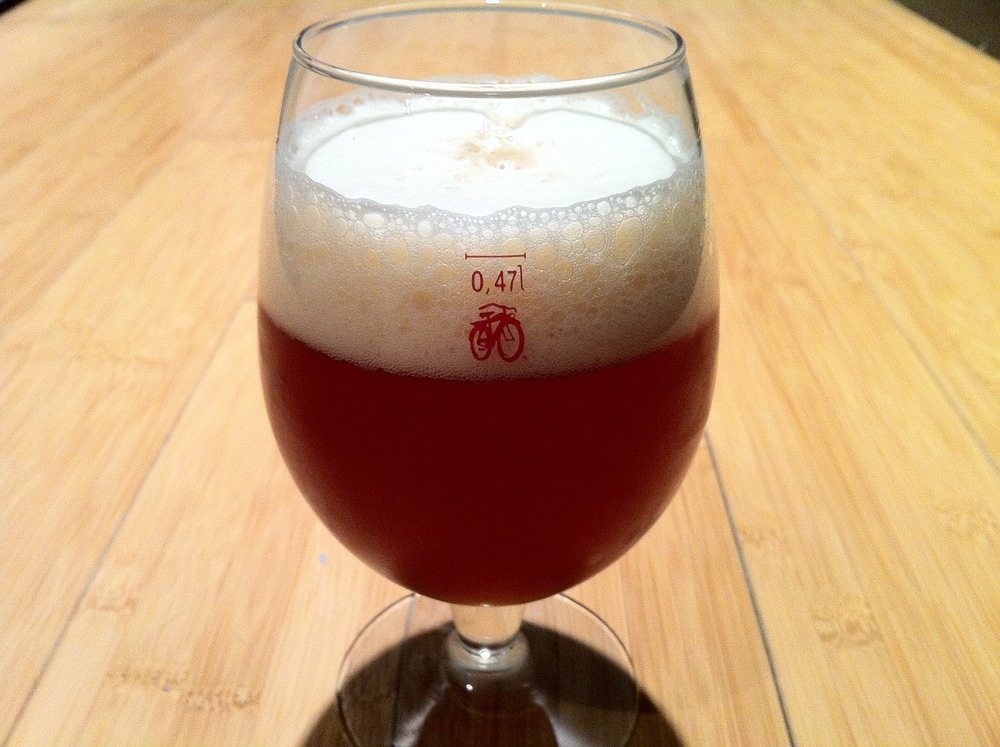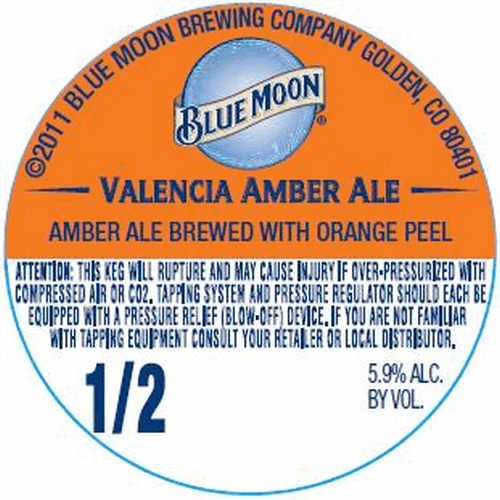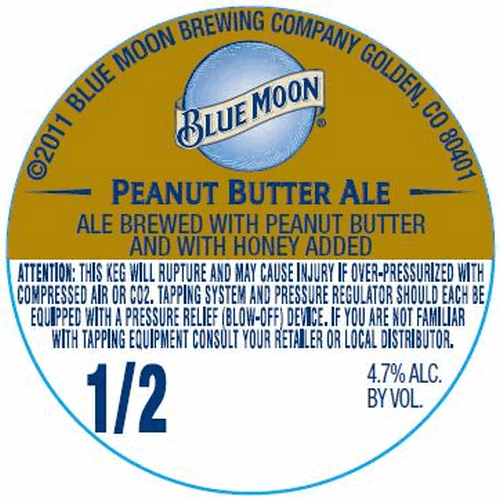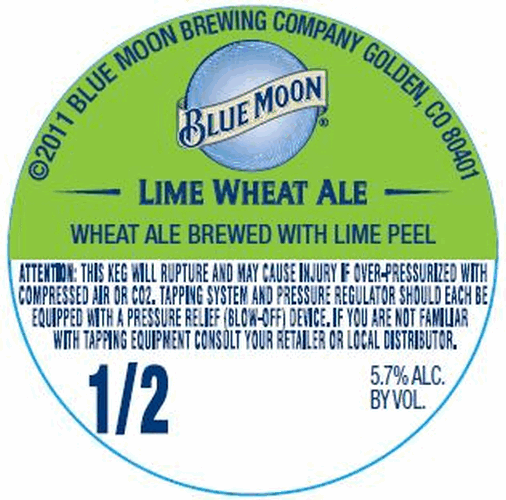The aftermath of using whole leaf hops
Cinnamon Porter
Look at the red hue along the edge.
Could there be anymore of a badass label?
Current beer plans
I’ve started brewing again since I had to dump the last few batches of beer and am in different stages of 3 new beers.
Cinnamon Porter: I brewed this three weeks ago and I just bottled it yesterday. Because my beers are bottle-conditioned, it will be at least another 3 weeks until it’s “ready.”
I purchased an ounce of cinnamon sticks to be used in this beer. .25 ounces was put in at the end of the boil. This was mostly because I was undecided when it was I should be adding the cinnamon. I was set on adding it to the fermenter but I thought I’d throw some in the boil to for good measure. The other .75 ounces was put in a cup of Crown Royal whisky with a little bit of vanilla extract added as well. This was left to soak for the entire first week that the beer was fermenting. Few reasons for this: One, anything you add to the fermenter must be sanitized. The typical way to add something like this would be to soak it in a little bit of boiling water for about 15 minutes, then cool it, and dump all of it, water included, into the fermenter. I wasn’t fond of adding water to the fermenter so I opted to soak it in whisky instead. The high alcohol content of whisky makes it sanitary and it tastes better than water. I waited a week to pour it in to ensure the cinnamon sticks really soak in the whisky. Also, the first week is when the yeast are actively converting the sugars and there’s a lot of activity going on in the beer. Adding hops, or anything else, during this time can result in the flavor being lost due to the fermentation process. After the first week, the actual fermentation is complete and the beer is conditioning or settling out some of the flavors, so it is ideal to add it then.
The color is very dark, almost black. However, swirling the beer around shows a reddish hue. The cinnamon gives the porter a nice smell as well as a different kind of bitterness than is usually present from the roasted malts or hops. The cinnamon isn’t too overpowering, but you definitely need to like cinnamon if you are going to drink it.
Honey Pale Ale: The very first beer I brewed was a pale ale that used only one malt and one variety of hop, centennial hops. I wrote that recipe as simple as possible just to get an idea of where to start when it comes to writing my recipes. Despite all my other beers since then containing various varieties of malts and hops, I liked the idea of making the same simple beer again, but attempting to improve the flavor. There are a lot of single malt and single hop beers (typically called SMaSH beers) that are very good. I think being able to make a really good beer with as few ingredients as possible is a sign of skill. So I changed the things I found boring in the first one.
First, I used a higher quality, Belgian pale malt this time around. The hops tasted great in the original, however it wasn’t quite bitter enough and there wasn’t as much aroma as I would like. So I adjusted the amounts and times that hops are added to accentuate the bitterness, but still keep it moderate to keep with the style. I am also adding twice as much hops in the fermenter (called, dry-hopping) to boost the aroma.
On top of those changes, I wanted an added sugar in there that would compliment the single malt without being too obvious. I added honey to this beer as well. Not enough that would change this beer in to a braggot (beer made up of 50% honey, 50% malt) but enough to make a light difference.
I brewed this last Sunday so it is currently fermenting away. I’ll dry hop it this upcoming Sunday and from there, it will be about 5 weeks until it is ready.
IPA: I was very impressed with the IPA I previously brewed. The feedback I got from the people who have tried it was that they were as well. However, I did find it lacking in a few areas. Much like my pale ale, I modified the recipe to try and improve the flavor.
Cascade hops were the only variety used in the original. It had a great bitterness, however it wasn’t as complex in flavor as I would have liked. This time around I purchased chinook hops to use as well. Drink a Stone Arrogant Bastard to get an idea of what these hops taste like. I add hops several times during the boil in this recipe. The chinook hops will be primarily added in the first half, where as the second half will use primarily cascade hops. Chinook hops have a higher alpha acid (bittering component in hops) so they are better suited in the beginning, where as cascade is better suited as an aroma hop to be added at the end of the boil.
The original IPA, just like the pale ale, was really lacking in the aroma department. So, once again I am adding twice as much in the fermenter. Not only that, I am going to be using citra hops. Citra hops are a newer variety of hops that are popularly used as a bittering hop, or to dry-hop beers with. They have a very citrusy flavor and smell so they are perfect for IPA’s.
Very few places sell citra hops, since they are less common and a bit more expensive. Most places I checked either didn’t carry them, or were sold out. I found a site that had both pellets and whole leaf hops. Briefly, these are the two common ways to buy hops. Whole leaf hops are hops plucked from the vine and packaged. Pellet hops are hops that are ground and compacted into little pellets. Pellets are typically more common since they take up less space and are easier to filter out when brewing. However whole leaf hops are ideal for dry hopping as they add a fresher aroma. If I’m going to buy citra hops to dry-hop the beer, I figure I should buy the whole leaf. This will be the first time I use whole leaf hops. I am very excited to see how this beer turns out! I am going to brew it Wednesday.
After these three beers, I need to take another short break from brewing as I will be moving. Rest assured, the next few beers are already planned out: First, I’ll be making what will basically be the brown ale version of the pale ale, however I will be using maple syrup. I also plan on buying a fresh pumpkin and brewing a smoked pumpkin porter! This will be quite an involved process to make. Due to the amount of ingredients I will be adding to this beer, it will be a small batch, but it will be worth it!
ALLIES WIN THE WAR!: Best beer label ever!
21st Amendment has not only great beer, but also awesome graphic design on all of their beers. This beer is no exception.
One, it has a badass name and two, it doesn’t look like a beer label. All of their beers are canned so imagine seeing this newspaper print wrapped around the entire can.
A quick review of my IPA
I finally had the chance to taste the bottled and carbonated IPA I brewed and I was pleasantly surprised! Of the three beers I’ve brewed thus far, this one is definitely my favorite.
It has a very reddish hue, I was expecting it to be more of a golden color. This shows how much of an effect the slightest specialty grain addition affects the color.
There isn’t as much hop aroma as I would like. Typically, I love IPAs with a strong hop smell. This, on the other hand, has more of a bready, malt smell. Not bad, just not what I’m looking for in an IPA.
It’s amazing how much the taste of a beer changes as it’s fermenting and conditioning. Immediately after brewing, it was a very sweet liquid, with some florally, hop taste. After it finished fermenting, it had a very smooth texture. Not too thin, and not too thick. The sweetness mostly disappeared, but what was left had masked most of the hop bitterness. It made for a very good beer, but not what I would recognize as an IPA. After I let it carbonate and ferment in the bottle, it had changed completely. The carbonation gave the beer a lighter texture. It still has a very smooth taste, but only in the beginning. The finish has a wall of bitter hops that come out of nowhere. Now it tastes like an IPA! While it doesn’t have the aroma I was looking for, it has a much better bitterness to it than I typically find in most IPAs.
Next time I brew this, I’ll likely leave the grain bill alone. The taste was smooth and had a great texture and reddish color made the beer stand out from typical pale colored beers. While I’ll likely mix up the types of hops I used, I want to keep the same bitterness levels. I loved the bitter finish this beer had. However, I’ll add quite a bit more at the end of the boil and dry hop the fermentor with more hops as well. Adding more hops during these times will produce more hop aroma.
I am really looking forward to people trying this beer, but I admit, the 8.5% alcohol and bitter finish might be a bit much for most people!
Pale Ale
Here is a picture I took a few days ago of the pale ale I brewed. The cloudiness is from the yeast. All the beers I brew are bottle conditioned, meaning that they are fermenting and carbonating in the bottle. This is why, after waiting 3 weeks to bottle it, it needs to sit in the bottle for 2-3 more weeks. This leaves a layer of yeast at the bottom of the bottle.
Blue Moon seeks approval for 5 new beer labels.
5 new keg labels from Blue Mooon. It’s interesting that these approvals are for kegs. I don’t think I’ve ever seen a Blue Moon seasonal on tap anywhere, but I could be wrong.
I’m not a fan of Blue Moon, but their seasonals are sometimes ok. Seeing this list though makes me wonder. It looks like they are throwing darts at a list of beer types in hopes at least one of them sticks. That tends to be the way their parent company, SAB-MillerCoors works. Miller is abandoning their MGD 64 Lemonade because it failed to appeal to a wide audience. I imagine the same thing will happen here.
Lemon Wheat Ale, Lime Wheat Ale and Valencia Amber Ale all seem too similiar to make sense. Not to mention Blue Moon is usually served with either an orange or lemon slice in it. The flavor is probably made with an overhyped, artifical sweetner.
Peanut Butter Ale just sounds gross. I like peanut butter and honey, and I think they could make for unique ingrediants in a beer, but I don’t believe that Blue Moon will use real ingrediants or use them in a subtle, tasteful way.
I am curious to try the Farmhouse Ale though. Farmhouse is often an interchangable name with saison. However I think the craft brewers who use the name farmhouse will have a funky tartness going on in the beer as opposed to saisons, that aren’t usually sour. Blue Moon is not a craft brewer so this beer will likely not be similar to either style and will likely taste the same as their White Ale, maybe just a bit drier. Why can’t they make something different, rather than just variations of their White Ale?
Black IPA
After spending the day seeing all my beers taste like vinegar, I was scared to try one of my finished beers. I bottled both the IPA and black IPA the day I brewed the brown ale. What if I contaminated those beers while bottling? It’s been 2 weeks since I bottled those beers and I had put one of each in the fridge to try two days ago. I had to try one of them to see if it was ok.
I opened a bottle of the black IPA and poured a glass. It smelled great. And it tasted even better! I was so relieved. It wasn’t very hoppy, a bit more like a porter than a black IPA. Very malty with a sharp bitterness in the finish. If I were to change it, I’d add more hops early in the boil to add more hop bitterness and more hops during fermentation to add some more aroma.
The color is surprisingly very black. When I initially brewed this, it was much more brown and I was concerned that I didn’t add enough carafe malt. After tasting it now, I’m thinking a little less would tone down the sharp bitterness in the finish. And besides, it’s crazy black now!












